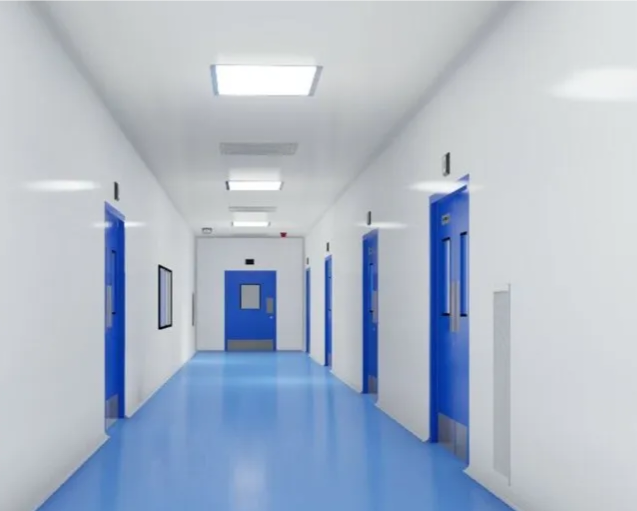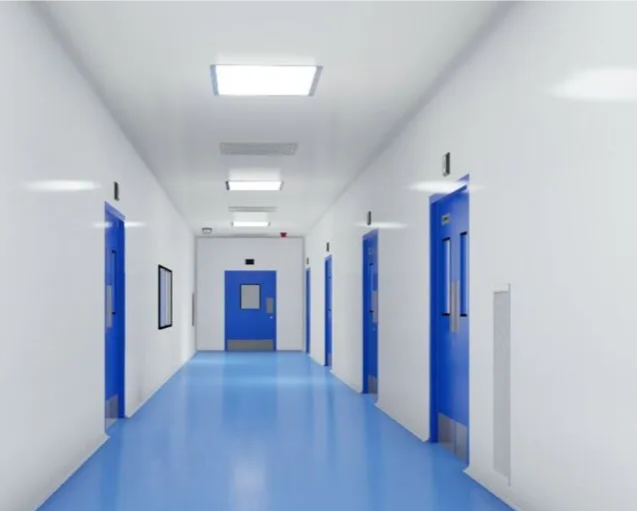Definition of clean room: It is a controlled area in pharmaceutical dosage form manufacturing can be defined as an area with a complete control over airborne particulate matter which intern help to minimize or render the environment free from microbial contamination, such an environment is required for aseptic processing, manufacturing, manipulating, filling, packing operations for a product which is required to be sterile throughout its shelf life. Clean rooms are also used in some microprocessor manufacturing where in a small airborne particle might damage the micro systems. In pharmaceutical dosage form manufacturing company clean room is of very important manufacturing arias. Clean room in pharma is classified according to level of cleanness.
Sterile area classification
Pharmaceutical clean room classification
Classified and unclassified area in pharma
Difference between classified and unclassified area in
Pharmaceutical Manufacturing area requirement with respect to cleanness class clean room classification is based on particle count in clean room and up on the size of particles as well.
Clean room classification pharma
1) Tablets dosage form manufacturing Grade D or class 100000 clean room is required or it can be said a class 100000 aria suitable for solid oral dosage form.
2) Oral Liquid dosage form: Grade D or Class 100000 Clean Room is required
3) Topical preparation : Ointment and Cream, dosage form: Grade D or Clean room of Class 100000 required
4) Parenteral dosage form and injectable dosage form: Clean room of Grade A or Class 100 required for filling spot and surrounding of filling spot the area must meet Grade B or Class 1000.
5) What is uncontrolled and controlled area in Pharmaceutical Manufacturing company:
Packing hall and other area which where product is exposed to environment as a completely packed closed inside a container, strip or pack, in other words pharmaceutical product which is used by patient is not exposed to environment in its pack, the area where these products packed in their primary packs are finally packed may be a packing hall.
In a pharma company such areas are designed with uncontrolled environment, that is the particle count in the area remains as such as it is there.
Air in such area is just filtered through coarse air filters and cooled and circulated in the area, such area is called uncontrolled area.
Clean room is classified with respect to particle count it bare in a one cubic foot of air sampled. The particle size counted or considered of 0.1, 0.2 and 0.3 micron of 0.5 micron and above 0.5 micron.
U.S FEDERAL STANDARD 209E CLEAN ROOM CLASSIFICATION IN COMPARISON WITH ISO AND EU CLEAN ROOM GRADES.
Clean room classification pharma manufacturing company
|
ISO |
(Federal Standard 209 E) |
Grade |
Limit of Greater Than or equal to 0.1 μm micron particles |
Limit of Greater Than or equal to 0.2 μm micron particles |
Limit of Greater Than or equal to 0.3 μm micron particles |
Limit of Greater Than or equal to 0.5 μm micron particles |
Limit of Greater Than or equal to 5 μm micron particles |
||
|
|
|
Per Cubic meter |
Per Cubic meter |
Per Cubic meter |
Cubic meter |
Cubic foot |
Cubic meter |
Cubic foot |
|
|
ISO3 |
1 |
– |
1000 |
237 |
102 |
4 |
NA |
NIL |
NIL |
|
ISO4 |
10 |
– |
10000 |
23700 |
1020 |
35 |
1 |
|
|
|
ISO5 |
100 |
A at working condition B at Rest |
100000 |
237000 |
10200 |
3530 |
100 |
NIL |
NIL |
|
ISO6 |
1000 |
|
1000000 |
NA |
102000 |
35300 |
1000 |
247 |
7 |
|
ISO7 |
10000 |
C |
NA |
NA |
NA |
353000 |
10000 |
2470 |
70 |
|
ISO8 |
100000 |
D |
NA |
NA |
NA |
3530000 |
100000 |
24700 |
700 |
Example: inject able aseptic filling aria, (laminar air flow work bench with HEPA filter efficiency of 99.99 % of 0.3 micron) 450 to 500 air changes per hour are required to maintain the level of cleanness to class 100.
2) Class 1000 Clean room
Class 1000 is a clean room with particle count below 1000 number of particles found in its air equivalent to 1 cubic foot or below 35300 particles in cubic meter of air tested. The particle size being counted is 0.5 micron and above and no particle of size 5 micron (nil count). 7 particles of size range 5 micron in 1 cubic foot or 247 particles of size rang 5 micron in cubic meter of air tested.
3) Class 10000 Clean room
Class 10000 is a clean room with particle count below 10000 numbers of particles found in its air equivalent to 1 cubic feet or below 353000 particles in cubic meter of air tested. The particle size being counted is 0.5 micron and above. And no particle of size 5 micron (nil count). 70 particles of size range 5 micron in 1 cubic foot or 2470 particles of size rang 5 micron in cubic meter of air tested
4) Class 100000 Clean room
Class 100000 is a clean room with particle count below 100000 numbers of particles found in its air equivalent to 1 cubic feet or below 3530000 particles in cubic meter of air tested. The particle size being counted is 0.5 micron and above. And no particle of size 5 micron (nil count). 700 particles of size range 5 micron in 1 cubic foot or 24700 particles of size rang 5 micron in cubic meter of air tested.
European Union classification of clean room:
European Union good manufacturing practices guidelines classification of clean room define on the basis of particle count observed not only at working condition of clean room but it also require to comply particle count at rest condition
Clean room classification Table
|
Class
|
Limit of particles AT REST
|
Limit of particles
AT Operation
|
||
|
Number of 0.5 micron equal or above particles/ Cubic meter
|
Number of 5 micron equal or above particles/ Cubic meter
|
Number of 0.5 micron equal or above particles/ Cubic meter
|
Number of 5 micron equal or above particles/ Cubic meter
|
|
|
A
|
3500
|
0
|
3500
|
0
|
|
B
|
35000
|
0
|
350000
|
2000
|
|
C
|
350000
|
2000
|
3500000
|
20000
|
|
D
|
3500000
|
20000
|
NA
|
NA
|
Class A Clean room
At rest:
Maximum allowable number of particles of 0.5 micron or above size in cubic meter of air tested = 3500
Maximum allowable number of particles of 5 micron in cubic meter of air tested = 0 “ZERO”
In operation:
Maximum allowable number of particles of 0.5 micron or above size in cubic meter of air tested = 3500
Maximum allowable number of particles of 5 micron in cubic meter of air tested = 0 “ZERO”
Class B Clean room
Class B is provided just adjacent to Class A where cortical activity is done like feeling of injectable liquid or powder for injection in vials or Blow filling and sealing activity under laminar flow bench which provide class 100 environment, but surrounding to LAF Class B is required to maintained.
Class C Clean room
At rest :
Maximum allowable number of particles of 0.5 micron or above size in cubic meter of air tested = 350000
Maximum allowable number of particles of 5 micron in cubic meter of air tested = 2000
In operation:
Maximum allowable number of particles of 0.5 micron or above size in cubic meter of air tested = 3500000
Maximum allowable number of particles of 5 micron in cubic meter of air tested =20000Class D Clean room
At rest:
Maximum allowable number of particles of 0.5 micron or above size in cubic meter of air tested = 3500000
Maximum allowable number of particles of 5 micron in cubic meter of air tested = 20000
In operation:
Maximum allowable number of particles of 0.5 micron or above size in cubic meter of air tested = Not set.
Maximum allowable number of particles of 5 micron in cubic meter of air tested =Not set.


Leave a Reply